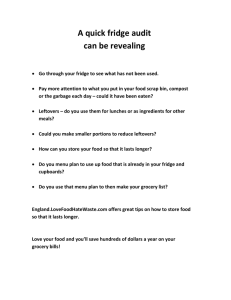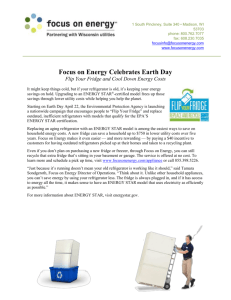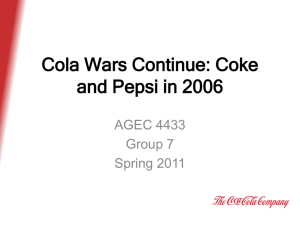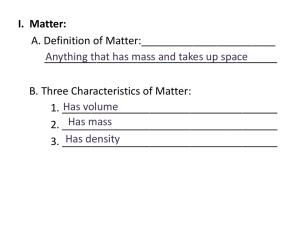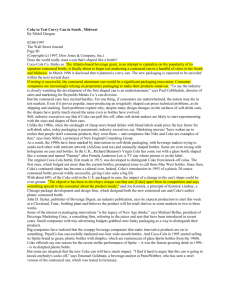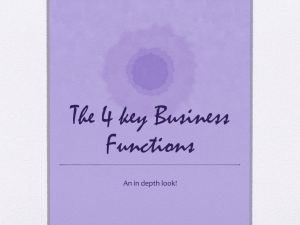Examples_of_qualitative_research
advertisement
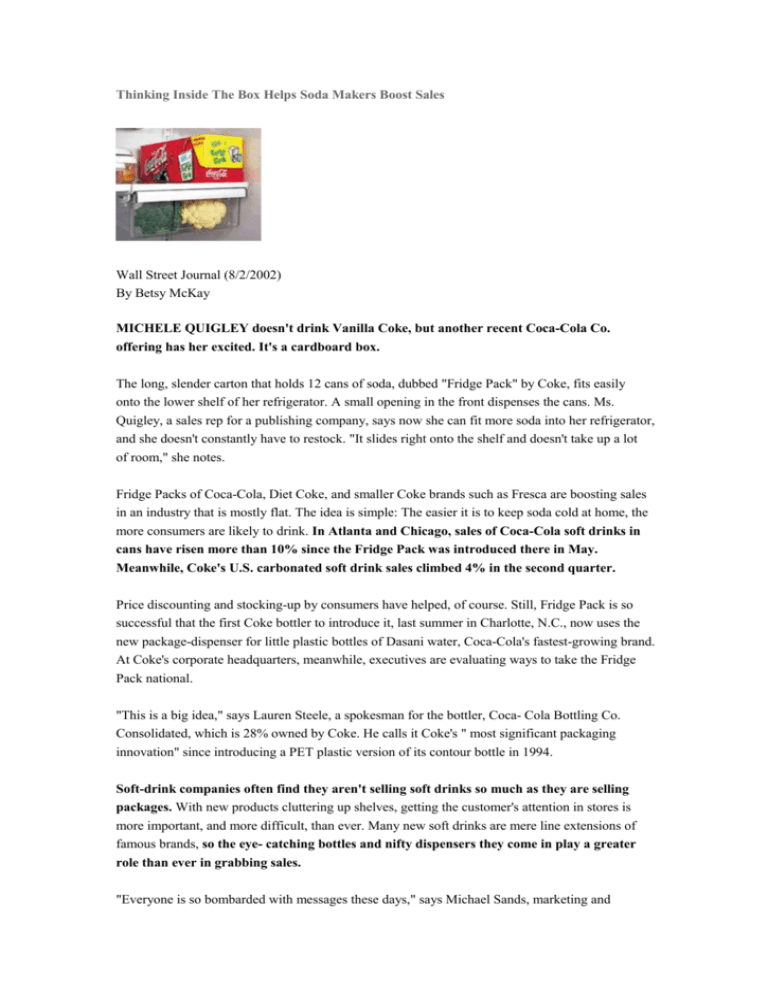
Thinking Inside The Box Helps Soda Makers Boost Sales Wall Street Journal (8/2/2002) By Betsy McKay MICHELE QUIGLEY doesn't drink Vanilla Coke, but another recent Coca-Cola Co. offering has her excited. It's a cardboard box. The long, slender carton that holds 12 cans of soda, dubbed "Fridge Pack" by Coke, fits easily onto the lower shelf of her refrigerator. A small opening in the front dispenses the cans. Ms. Quigley, a sales rep for a publishing company, says now she can fit more soda into her refrigerator, and she doesn't constantly have to restock. "It slides right onto the shelf and doesn't take up a lot of room," she notes. Fridge Packs of Coca-Cola, Diet Coke, and smaller Coke brands such as Fresca are boosting sales in an industry that is mostly flat. The idea is simple: The easier it is to keep soda cold at home, the more consumers are likely to drink. In Atlanta and Chicago, sales of Coca-Cola soft drinks in cans have risen more than 10% since the Fridge Pack was introduced there in May. Meanwhile, Coke's U.S. carbonated soft drink sales climbed 4% in the second quarter. Price discounting and stocking-up by consumers have helped, of course. Still, Fridge Pack is so successful that the first Coke bottler to introduce it, last summer in Charlotte, N.C., now uses the new package-dispenser for little plastic bottles of Dasani water, Coca-Cola's fastest-growing brand. At Coke's corporate headquarters, meanwhile, executives are evaluating ways to take the Fridge Pack national. "This is a big idea," says Lauren Steele, a spokesman for the bottler, Coca- Cola Bottling Co. Consolidated, which is 28% owned by Coke. He calls it Coke's " most significant packaging innovation" since introducing a PET plastic version of its contour bottle in 1994. Soft-drink companies often find they aren't selling soft drinks so much as they are selling packages. With new products cluttering up shelves, getting the customer's attention in stores is more important, and more difficult, than ever. Many new soft drinks are mere line extensions of famous brands, so the eye- catching bottles and nifty dispensers they come in play a greater role than ever in grabbing sales. "Everyone is so bombarded with messages these days," says Michael Sands, marketing and operations chief at Cadbury Schweppes PLC's Snapple Beverage Group. In April, Snapple brought out its own "Snap Pak," an eight-can cardboard dispenser of Snapple Apple juice drink, for the fridge. "You have to influence people at the last possible point where they make their decision." Experts say packaging innovations historically have produced big volume gains in the industry. They also have helped improve margins in a business in which raising prices can be hard. Volume of Coca-Cola Classic rose 5.7% in 1994 after the company introduced a 20-ounce PET contour bottle, modernizing the old look and getting people to pay more for a bigger bottle at the same time. Coke'sresearch shows "the consumer is more package sensitive than they are brand sensitive," says Karen Smith, a packaging innovation manager at Coke's Atlanta headquarters. Fridge Pack got its start at Alcoa Inc., the aluminum company, which was looking for a way to sell more cans. Researchers for the company spent several weeks in 1998 following families to the supermarket and watching them load their pantries and refrigerators. They learned that while people buy their sodas in multipacks, most put only three or four cans at a time into the refrigerator. They also discovered there's a lot of "dead" space in the back. Engineers and marketing experts from Alcoa and Riverwood International Corp., an Atlanta packaging company, held a brainstorming session at a Georgia lake retreat, sitting in a circle around a refrigerator and batting around ideas. Fridge Pack was one of the concepts to emerge. In Charlotte, Coke Consolidated, Coke's second-largest U.S. bottler, leapt on the idea, bringing it to market in August 2001. "When we saw it, we wondered why no one had thought of it before," recalls Mr. Steele, the spokesman. It took some tinkering to get the Fridge Pack right. The original handle didn't hold up. By the end of last year, though, the bottler had Fridge Packs of Coca-Cola and other brands on store shelves in 10 southeastern states, including the Carolinas. Sales of 12-packs rose 25%, and contributed one point of the bottler's 2.8% volume growth last year. The Dasani Fridge Pack, suggested by a board member and introduced in May, is "flying off the shelves," Mr. Steele says. More new packaging innovation is on the way, he says. Two other Coke bottlers, including the biggest, Coca-Cola Enterprises Inc., which is owned 40% by Coke, are now using the Fridge Pack. But expansion beyond current markets could go slowly: Adapting each canning line costs $500,000. For its part, Pepsi is sticking with a 24-pack dispenser, shaped like a cube, which it introduced for refrigerators in 1993. Yet as store shelves continue to grow crowded, companies are likely to experiment even more with packaging, says Michael Bellas, chairman and chief executive officer of Beverage Marketing Corp., an industry consultant. Future bottles may change color, deliver messages, or have caps that release flavors, he predicts.

